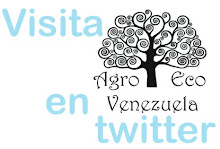Sustainable agricultural practices contribute significantly to One Health
Yan et al., 2022.
The One Health concept proposes that the health of humans, animals, and the environment are interconnected. Agricultural production is a critical component of One Health as food links the environment to human health. Food not only provides nutrients to humans but also represents an important pathway for human exposure to environmental microbes as well as potentially harmful agrochemicals. In addition, inappropriate agronomic practices can cause damage to the environment which can have unintended adverse impacts on human health. Therefore, improving agricultural production systems and protecting environmental health should not be viewed as isolated goals as they are strongly interlinked. Here, we used the nexus of soil, plant, and human microbiomes to discuss sustainable agricultural production from the One Health perspective. We highlighted three interconnected challenges faced by current agronomic practices: the transmissions of pathogens in soil-human microbial loops, the dissemination of antibiotic resistance genes in agroecosystems, and the impacts of chemical pesticides on humans and environmental health. Finally, we propose the potential of utilising microbiomes for better sustainable agronomic practices to contribute to key goals of the One Health concept.
https://onlinelibrary.wiley.com/doi/full/10.1002/sae2.12019
.
















